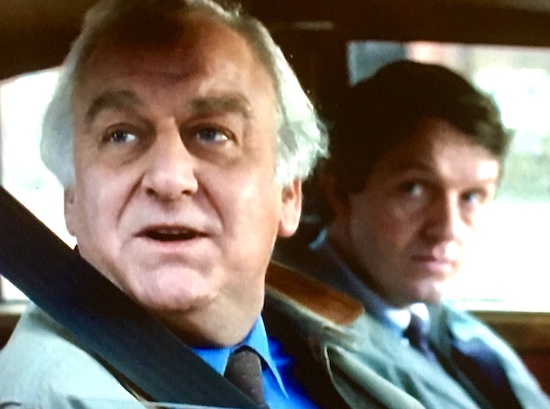"Just what are these things Lewis?" demands Inspector Morse. "Fractals, they’re called," Lewis replies. "New geometry, computer generated, to do with chaos – why, if a butterfly flaps its wings in the Amazon jungle, you have a hurricane in the Himalayas." Morse looks on, incredulous. They pull down the fractals poster in teenager Vicky Lewis’s bedroom and find the wall behind plastered with rave flyers. Morse puts on her headphones and presses play on the stereo. "There’s something in here, play that bit again!" he yells over an earful of acid house. "That’s the ‘Hallelujah’ chorus… conducted by Sir Adrian Boult!"
While Cherubim & Seraphim is the best episode of late 80s-early 90s TV detective drama Inspector Morse, the important truth of the series is that it’s not really a detective drama at all. Rather, it’s a show about Morse, the most ornery detective who ever lived. Colin Dexter, on whose books the programme was based and who has a cameo in every episode, said that the genesis of Morse was the fact that he wanted to write books about a very clever man who could understand clues when nobody else could. "I gave him a few of my qualities," he said, confusing tastes for personality: "a liking for Wagner, crosswords and real ale." He added that Morse was "a melancholy man" – which is a nice way of saying that he regularly blows up at people at high volume. Morse explodes when a) a coroner expresses annoyance at being called out of hours b) a pub landlord calls time on lunchtime service just as they walk in the pub c) Lewis buys him cans of bitter in lieu of said lunchtime pint(s) ("That’s not real beer Lewis!") and in this episode, the moment Lewis suggests Morse’s beloved step-niece may have gone to Slough ("Marilyn wouldn’t go to Slough!" he scoffs). Cherubim & Seraphim is also one of the few times we get a little insight into Morse’s upbringing and feelings, although John Thaw said Morse was the sort of man he would be a little frightened by, because he “lived on such a short fuse”. Could there be a better character to come up against the strangeness of rave culture in a mainstream, prime-time TV programme beloved of Middle England?
Cherubim & Seraphim was first aired 15 Apr 1992, a month before the infamous Castlemorton Common rave, but a few years after moral panic and subsequent police crackdowns had begun to cause problems for the free party scene. It was one of director Danny Boyle’s first big gigs and he later recalled that when he got the job he was embarrassed to tell his dad because the pay was more than he had ever earned. You might even see this episode of Morse as being a Home Counties prequel to Trainspotting, the film with which Boyle would break through a few years later before he went on to direct Olympic opening ceremonies and achieve Hollywood fame with the likes of The Beach and Slumdog Millionaire. The plot focuses on the rural Oxfordshire rave community and three promising teenagers who have died in suspicious circumstances after finding paradise in an industrial unit in Slough. The episode weaves together chaos theory, psychonaut literature, Bloomsbury poetry, the free party scene and pirate radio – …


